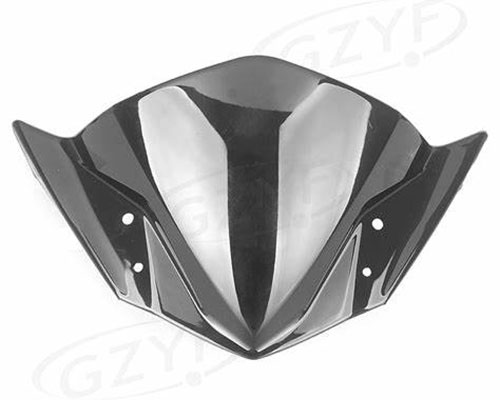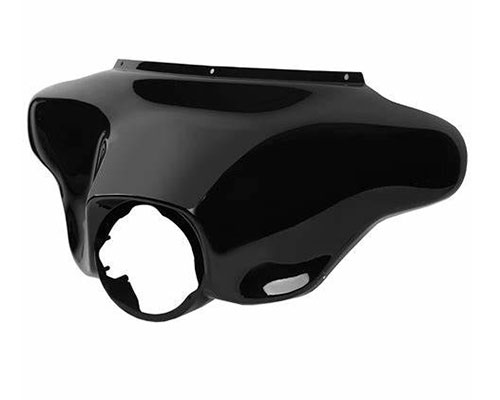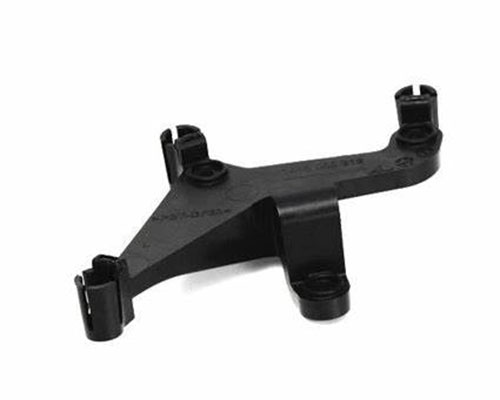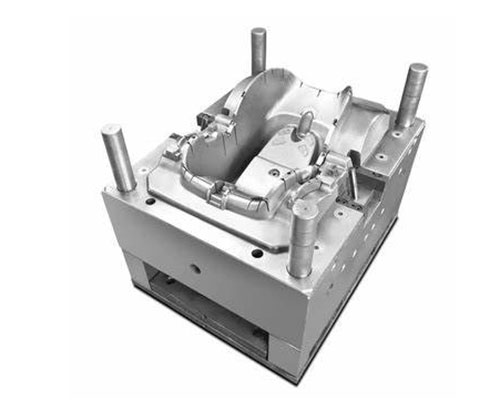Prototyping and Manufacturing Application in Motorcycle parts Industries
Fast-Track Motorcycle Production with Yigu Prototyping & Manufacturing. Accelerate your motorcycle design and production with Yigu Technology cutting-edge solutions. We bridge the gap between prototyping and mass manufacturing, ensuring quality and efficiency.
Key Benefits:
✔ ✅Rapid Prototyping: 3D printing, CNC machining, and sheet metal fabrication for quick design validation.
✔ ✅Mass Production: High-volume manufacturing with precision tooling and scalable processes.
✔ ✅Cost Efficiency: Reduce lead times and expenses with optimized workflows.
✔ ✅Material Expertise: Advanced metals, plastics, and composites for durable motorcycle parts.
✔ ✅End-to-End Support: From concept to assembly, we streamline your supply chain.
Ideal for OEMs and aftermarket suppliers aiming to innovate faster and scale smarter.
1. Introduction to Rapid Prototyping in Motorcycle Industry
1.1 Definition and Importance of Rapid Prototyping
Rapid prototyping is a set of techniques used to quickly fabricate a scale model of a physical part or assembly using three-dimensional computer-aided design (CAD) data. In the motorcycle industry, it has revolutionized the way products are designed and developed. With technologies such as 3D printing, CNC machining, SLA, SLS, and FDM, designers can now create prototypes with high fidelity and speed. This allows for quicker design iterations and faster time to market. For example, a motorcycle manufacturer can use 3D printing to create a prototype of a new exhaust system in just a few days, compared to the weeks it would take with traditional methods. This not only saves time but also reduces costs associated with tooling and material waste.
1.2 Evolution of Manufacturing Techniques
The motorcycle industry has seen significant advancements in manufacturing techniques over the past few decades. Traditional methods such as casting and forging have been the backbone of motorcycle production for years. However, with the advent of rapid prototyping technologies, the landscape has changed. Rapid prototyping allows for more complex designs that were previously impossible to manufacture. For instance, the use of carbon fiber composites in motorcycle parts has become more feasible with rapid prototyping. These materials offer high strength-to-weight ratios and can be tailored to specific design requirements. Additionally, the integration of lean manufacturing and just-in-time production principles has further enhanced the efficiency of motorcycle production lines. Rapid prototyping fits seamlessly into these systems, enabling flexible manufacturing and on-demand production. This has led to a more agile and responsive manufacturing process, capable of meeting the demands of a rapidly changing market.
2. Rapid Prototyping Technologies in Motorcycle Design
2.1 Overview of Key Technologies
Rapid prototyping has emerged as a game - changer in the motorcycle design process. Technologies such as 3D printing, CNC machining, SLA, SLS, and FDM each offer unique advantages that cater to different design and manufacturing needs.
3D printing, also known as additive manufacturing, builds parts layer by layer. This technology excels in creating complex geometries and custom - designed components. For instance, it can produce intricate internal structures for motorcycle engine parts that would be difficult or impossible to achieve with traditional methods. It also allows for rapid design iterations. Designers can quickly modify the CAD model and print a new prototype to test different design concepts, such as the shape and size of air intake components, to optimize performance.
CNC machining, on the other hand, is a subtractive manufacturing process. It involves removing material from a block to create the desired part. This method is highly precise and is often used for producing metal parts with tight tolerances. In motorcycle design, CNC machining can be used to create high - quality prototypes of critical components like crankshafts and connecting rods. These parts require high strength and accuracy to ensure the reliability and performance of the engine.
SLA, or stereolithography, uses a liquid resin that is cured by a UV laser to create solid parts. It is known for its ability to produce parts with high resolution and smooth surface finish. This makes it ideal for creating aesthetic prototypes of motorcycle body panels and fairings. These components need to have a visually appealing appearance and fit well with other parts of the motorcycle. SLA can help designers achieve the desired look and feel in a relatively short amount of time.
SLS, or selective laser sintering, works with powdered materials. It can create functional prototypes with complex internal structures and without the need for support structures. This is particularly useful for producing motorcycle parts that have internal channels or hollow sections, such as certain types of suspension components. The ability to create these parts without support structures reduces post - processing time and material waste.
FDM, or fused deposition modeling, is a widely used 3D printing technology. It is cost - effective and can produce parts relatively quickly. It is often used for creating concept models and functional testing prototypes. For example, designers can use FDM to create a prototype of a motorcycle seat to test its ergonomics and comfort. The material properties of FDM parts can be tailored to simulate the final product, allowing for realistic testing and evaluation.
2.2 Case Studies of Motorcycle Parts
3D - Printed Motorcycle Exhaust System
A motorcycle manufacturer faced challenges in designing a new exhaust system that met both performance and aesthetic requirements. Traditional manufacturing methods would have required extensive tooling and a long lead time. By using 3D printing, the manufacturer was able to create a prototype in just a few days. The design team could quickly iterate on the shape and size of the exhaust pipes to optimize airflow and reduce weight. The final 3D - printed prototype was tested for performance and durability. It showed a 15% improvement in fuel efficiency and a 10% reduction in weight compared to the previous design. The smooth surface finish of the SLA - printed prototype also met the aesthetic standards of the company. This case demonstrates the speed and flexibility of 3D printing in creating complex and functional motorcycle parts.
CNC - Machined Motorcycle Engine Components
When designing a high - performance motorcycle engine, precision is crucial. A company used CNC machining to create prototypes of engine components such as pistons and cylinder heads. The CNC machines were able to achieve tight tolerances of ± 0.01 mm, ensuring the parts would fit perfectly and function efficiently. The use of CNC machining allowed the design team to test different materials and designs quickly. They were able to identify the optimal combination of aluminum alloy and design parameters that provided the best balance of strength, weight, and heat dissipation. The prototypes were tested in a simulated engine environment and showed a 20% increase in power output compared to the previous design. This case highlights the precision and reliability of CNC machining in producing critical motorcycle engine parts.
SLA - Printed Motorcycle Fairing
A motorcycle designer wanted to create a new fairing with a unique and aerodynamic shape. Using SLA technology, the designer was able to create a prototype with a smooth surface finish and high - resolution details. The prototype was tested in a wind tunnel to evaluate its aerodynamic performance. The results showed a 12% reduction in air resistance compared to the existing fairing design. The SLA - printed prototype also allowed the designer to make adjustments to the shape and size of the fairing based on the wind tunnel test results. The final design was then used as a reference for mass - manufacturing the fairing using injection molding. This case illustrates the ability of SLA to create visually appealing and functional prototypes for motorcycle body components.
SLS - Printed Motorcycle Suspension Component
A motorcycle manufacturer was looking to improve the performance of its suspension system. They used SLS technology to create a prototype of a suspension component with a complex internal structure. The component had internal channels for fluid flow and needed to be lightweight and strong. The SLS - printed prototype allowed the design team to test the component's performance under various load conditions. The results showed a 25% improvement in shock absorption and a 18% reduction in weight compared to the previous design. The ability to create the component without support structures saved time and material waste. This case demonstrates the potential of SLS in producing functional and complex motorcycle suspension parts.
FDM - Printed Motorcycle Seat Prototype
To design a comfortable and ergonomic motorcycle seat, a company used FDM technology to create a prototype. The design team could quickly iterate on the shape and cushioning of the seat to meet the needs of different riders. The FDM - printed prototype allowed them to test the seat's comfort and fit in a realistic way. Based on user feedback, they made adjustments to the design to improve ergonomics and support. The final prototype was used as a reference for mass - manufacturing the seat using foam and leather. This case shows the cost - effectiveness and speed of FDM in creating functional prototypes for motorcycle seating.
3. Material Selection for Rapid Prototyping & Mass Manufacturing
3.1 Primary Material Categories
Material selection is a critical aspect of rapid prototyping and mass manufacturing in the motorcycle industry. The choice of materials can significantly impact the performance, durability, cost, and aesthetics of motorcycle parts. There are three primary categories of materials commonly used: plastics, metals, and composites.
Plastics
Plastics such as ABS, PLA, and nylon are widely used in rapid prototyping due to their versatility and cost - effectiveness. ABS is known for its strength and durability, making it suitable for functional testing prototypes. For example, ABS can be used to create prototypes of motorcycle handlebars and footrests that need to withstand significant mechanical stress. PLA is a more environmentally friendly option, often used for concept models and aesthetic prototypes. It provides a good surface finish and is easy to work with. Nylon, on the other hand, offers excellent flexibility and wear resistance. It is ideal for creating prototypes of motorcycle chain guards and other components that require a balance of strength and flexibility.
Metals
Metals like aluminum, titanium, and steel are essential for manufacturing high - performance and critical motorcycle parts. Aluminum is lightweight and has good thermal conductivity, making it a popular choice for engine components and wheels. For instance, CNC - machined aluminum pistons can provide high strength and efficient heat dissipation, crucial for engine performance. Titanium is known for its exceptional strength - to - weight ratio and corrosion resistance. It is often used in high - performance applications such as motorcycle exhaust systems and suspension components. Steel, with its high strength and durability, is used for structural parts like frames and brackets. However, its heavier weight makes it less suitable for components where weight reduction is a priority.
Composites
Composites, including carbon fiber and fiberglass, offer unique advantages in terms of strength, weight reduction, and aesthetics. Carbon fiber is an advanced material with an extremely high strength - to - weight ratio. It is used in high - end motorcycle parts such as body panels, swingarms, and rims. For example, a carbon fiber swingarm can reduce weight by up to 30% compared to a traditional steel swingarm while maintaining or even enhancing structural integrity. Fiberglass is a more cost - effective alternative to carbon fiber. It is commonly used for body panels and fairings due to its ease of molding and good impact resistance. The use of composites not only improves the performance of motorcycles but also enhances their visual appeal, contributing to a premium and modern look.
3.2 Impact on Design and Production
The selection of materials has a profound impact on both the design and production processes in the motorcycle industry. Each material category brings its own set of properties and requirements that influence how parts are designed and manufactured.
Design Considerations
- Material Properties: Understanding the mechanical, thermal, and chemical properties of materials is crucial for designing motorcycle parts. For example, the tensile strength and flexibility of nylon must be considered when designing a chain guard to ensure it can withstand impacts and resist wear.
- Durability: Materials like titanium and carbon fiber are chosen for their high durability, which is essential for critical components such as exhaust systems and suspension parts. This allows designers to create parts that can withstand the harsh operating conditions of motorcycles.
- Strength - to - Weight Ratio: The use of lightweight materials such as aluminum and composites enables designers to create motorcycles that are not only strong but also agile and fuel - efficient. For instance, replacing steel components with aluminum or carbon fiber can significantly reduce the overall weight of the motorcycle, improving its performance and handling.
- Cost Efficiency: While materials like titanium and carbon fiber offer superior performance, they are also more expensive. Designers must balance performance requirements with cost considerations to ensure the final product is economically viable. For example, using ABS for non - critical components can help reduce costs while still providing adequate performance.
Production Considerations
- Recyclability: In an era of increasing environmental awareness, the recyclability of materials is becoming more important. Plastics like PLA are more easily recyclable compared to some other materials, which can help reduce waste and environmental impact.
- Surface Finish: The surface finish of materials can affect the final appearance and functionality of motorcycle parts. For example, SLA - printed parts offer a smooth surface finish, which is ideal for aesthetic components like body panels. On the other hand, CNC - machined metal parts may require additional surface treatments such as polishing or coating to achieve the desired finish.
- Post - Processing Requirements: Different materials have varying post - processing requirements. For instance, FDM - printed parts may need support structures removed and surfaces smoothed, while SLS - printed parts generally require less post - processing due to the absence of support structures. These requirements can impact the overall production time and cost.
- Thermal Stability: Materials used in motorcycle parts must have good thermal stability, especially for components that are exposed to high temperatures such as engine parts. Metals like aluminum and titanium have high melting points and good thermal conductivity, making them suitable for such applications.
- Chemical Resistance: Motorcycle parts are often exposed to various chemicals such as fuel, oil, and cleaning agents. Materials like certain plastics and composites offer good chemical resistance, ensuring that the parts do not degrade over time. For example, nylon is resistant to many common chemicals, making it a suitable choice for components that come into contact with fuel and oil.
In conclusion, the careful selection of materials is essential for optimizing the design and production of motorcycle parts. By considering factors such as material properties, durability, strength - to - weight ratio, cost efficiency, recyclability, surface finish, post - processing requirements, thermal stability, and chemical resistance, designers and manufacturers can create high - performance, visually appealing, and cost - effective motorcycles.
4. Integration of Rapid Prototyping in Motorcycle Production Lines
4.1 Lean and Flexible Manufacturing Systems
The integration of rapid prototyping into motorcycle production lines has significantly enhanced the efficiency and flexibility of manufacturing processes. Lean manufacturing principles focus on minimizing waste and maximizing value for the customer. Rapid prototyping aligns perfectly with these principles by reducing lead times and enabling just-in-time production. For example, a motorcycle manufacturer can use rapid prototyping to create a prototype of a new part in a matter of days. This allows the production line to quickly switch to the new design without the need for extensive tooling changes. The ability to produce parts on demand also reduces inventory levels and associated costs. Flexible manufacturing systems benefit greatly from rapid prototyping as well. These systems can easily adapt to changes in product design and production requirements. Rapid prototyping enables the creation of custom tooling and fixtures that can be quickly modified to accommodate different parts. This flexibility allows manufacturers to produce a wide range of motorcycle models and components with minimal disruption to the production process. For instance, a single production line can switch between manufacturing different types of motorcycle frames or body panels by using rapidly prototyped molds and tools. This adaptability not only improves production efficiency but also enhances the manufacturer's ability to meet diverse customer demands.
4.2 Workflow and Supply Chain Optimization
Rapid prototyping has a profound impact on workflow and supply chain optimization in the motorcycle industry. By streamlining the prototype to production transition, rapid prototyping reduces the time and effort required to bring new products to market. The ability to quickly iterate on designs and produce functional prototypes allows manufacturers to identify and resolve issues early in the development process. This leads to fewer delays and rework during the production phase. In terms of supply chain integration, rapid prototyping enables better collaboration between different stages of the production process. Designers, engineers, and manufacturers can work together more effectively by sharing digital models and prototypes. This reduces communication gaps and ensures that everyone is aligned with the latest design changes. For example, a designer can create a 3D model of a new motorcycle part and send it to the production team for rapid prototyping.
The production team can then provide feedback on manufacturability and make necessary adjustments before the part goes into mass production. This close collaboration helps to optimize the entire workflow and minimize errors. On-demand manufacturing, facilitated by rapid prototyping, also optimizes the supply chain by reducing the need for large inventories of finished products. Manufacturers can produce motorcycles or components only when there is a customer order, reducing storage costs and the risk of overproduction. This approach also allows for greater customization and personalization of products, as manufacturers can quickly respond to specific customer requests. Batch production can be easily adjusted based on demand, ensuring that the production line is always running at an optimal level. Continuous improvement is another key benefit of integrating rapid prototyping into the production process. Manufacturers can use data collected from the production line to identify areas for improvement and quickly test new ideas using rapid prototyping. This iterative approach leads to better product quality, reduced costs, and increased customer satisfaction. In summary, the integration of rapid prototyping in motorcycle production lines has transformed the manufacturing process into a more efficient, flexible, and responsive system. By optimizing workflow and supply chain operations, manufacturers can achieve significant cost savings, reduce time to market, and enhance their ability to meet the evolving needs of the motorcycle market.



